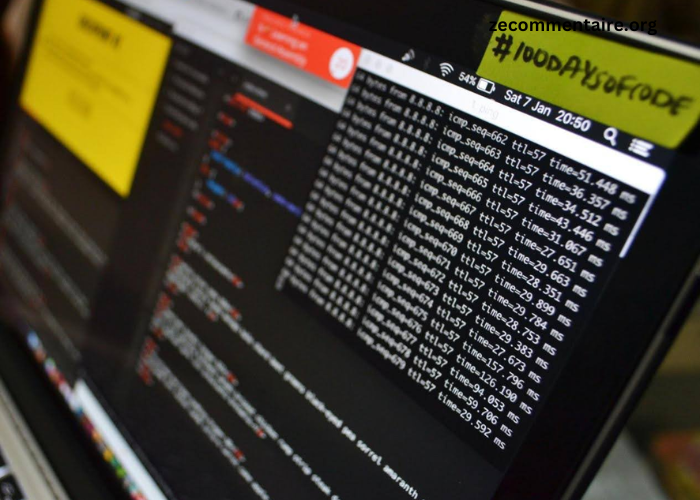A network security assessment is a process to identify and fix vulnerabilities in a computer network. This includes checking for weak spots that hackers could exploit. Regular assessments are crucial to protect sensitive information and ensure the network runs smoothly.
In this blog, we will discuss the top tools and techniques for conducting a thorough network security assessment.
Planning and Scoping the Assessment
Planning and scoping the assessment is the first step in network security. This phase defines the goals, scope, and boundaries. It also involves gathering information about the network.
Understanding what to test is vital. You should identify all devices, systems, and data involved. This ensures the assessment covers all parts of the network.
Effective scoping helps prioritize tasks. It aligns with the best cybersecurity practices for your organization. Clear scope prevents wasting time and resources.
Utilizing Vulnerability Scanners
Vulnerability scanners are key tools in any network security assessment. They automate the process of identifying weaknesses in a network. A network vulnerability scan detects outdated software and misconfiguration.
Scanning tools continuously monitor your network. This ongoing vigilance helps keep your network secure. Network vulnerability scans can also catch issues before they become major problems.
Using these tools is simple and efficient. They save time and provide detailed reports. Regular scans allow you to fix vulnerabilities quickly and maintain a strong security posture.
Strengthening Network Security with Firewalls
Firewalls are another essential tool for network security. They act as the first line of defense against external threats. Firewall monitors incoming and outgoing traffic, blocking unauthorized access.
There are different types of firewalls available, including packet filtering, application-level gateways, and proxy firewalls. Each offers its own set of features and benefits.
It’s important to regularly review and update firewall rules to ensure maximum protection. Implementing additional security measures, such
Employing Network Monitoring and Analysis Tools
Network monitoring and analysis tools help keep your network safe. They watch your network for unusual activity. These tools alert you to potential threats, making it easier to fix problems quickly.
Using network protection tools means you can see what’s happening in real-time. This helps to catch issues early before they become big problems. Regular monitoring ensures that your network stays safe and secure.
It’s important to choose the right network protection tools. Look for tools that fit your specific needs. Effective tools are easy to use and provide clear information.
Conducting Configuration and Compliance Audits
Conducting configuration and compliance audits is key for IT security. These audits check if systems follow rules and standards. An IT security audit finds weak spots in your network and fixes them fast.
Start by checking your system settings. Make sure they meet the necessary guidelines. Regular audits help keep your network safe and secure.
These audits also ensure compliance with laws. Following the rules helps avoid fines and penalties. Routine checks show that your IT security audit is working well.
Using these platforms improves your overall security posture. They save time by automating threat detection and response. Regularly updating your threat intelligence ensures you are always prepared.
Leveraging Threat Intelligence Platforms
Leveraging threat intelligence platforms can boost your network defense. These platforms gather data from many sources. They help you stay ahead of new threats.
By using threat intelligence, you can identify danger quickly. It alerts you to new hacking methods. This way, you can take action before problems arise.
These platforms are also easy to use. They provide clear and useful reports. This will help you understand and address risks quickly.
Using Multi-Factor Authentication
Multi-Factor Authentication (MFA) adds extra security to your login process. It requires more than just a password to verify your identity. This can include something you know, something you have, or something you are.
Using MFA can greatly diminish the risk of unauthorized access. Even if a hacker gets your password, they will need a second factor to log in. This makes it much harder for attackers to gain control of your accounts.
To set up MFA, choose from common methods like SMS codes or authentication apps. Each method provides a second layer of security. Regularly update your authentication methods to keep them effective.
Performing Social Engineering Tests
Social engineering tests check how well your people respond to tricks and scams. These tests use phishing emails and fake phone calls to see if staff can spot threats. It helps train them to be more careful with information.
Run these tests often to keep your skills sharp. Teach your team to recognize warning signs. Regular practice leads to better defenses against real attacks.
Social engineering tests show where training is needed. They help you fix weak points in your security. This keeps your network and your data safer from harm.
Analyzing Security Logs and Events
Analyzing security logs and events is key to finding issues quickly. Logs record all actions on the network. Review these logs regularly to spot anything unusual.
Use tools to help scan and sort log data. Look for patterns that show possible attacks. Quick action on these alerts can stop threats early.
Always keep logs from many sources. This gives a full picture of the network activity. Regular checks to make sure nothing gets missed.
Implementing Penetration Testing Tools
Penetration testing tools are vital for a strong network defense. These tools simulate attacks to find weaknesses. Look into penetration testing to learn how they can help protect your network.
These tools help find flaws that scanners might miss. They provide a hands-on approach to identifying security gaps. This helps in developing better protection strategies.
There are different types of penetration testing tools available, such as network and web application pen-testing. Each type serves a specific purpose and should be used accordingly. Utilizing a combination of these tools can provide a more comprehensive assessment.
Securing Your Network with a Comprehensive Network Security Assessment
A network security assessment is crucial for keeping your data safe. Using tools like vulnerability scanners, firewalls, and threat intelligence platforms strengthens your defenses. Regular assessments help find and fix weaknesses before they become major issues.
Penetration testing tools and social engineering tests also play a key role in identifying vulnerabilities. By regularly conducting configuration and compliance audits, as well as analyzing security logs and events, you can ensure that your network is secure and compliant with regulations.
Did this article help you? If so, take a look at some of our other blog posts for more informative reads.





